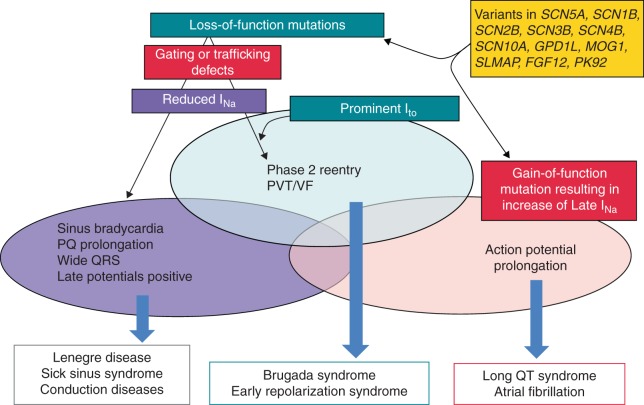Figure 2.
Schematic showing overlap syndromes resulting from genetic defects resulting in loss of function of sodium channel current (INa) or gain of function in Late INa. In the absence of prominent Ito or IK-ATP, loss-of-function mutations in the inward currents result in various manifestations of conduction disease. In the presence of prominent Ito or IK-ATP, loss-of-function mutations in inward currents cause conduction disease as well as the J-wave syndromes (Brugada and early repolarization syndromes). Early repolarization syndrome is believed to be caused by loss-of-function mutations of inward current in the presence of prominent Ito in certain regions of the left ventricle, particularly the inferior wall of the left ventricle. The genetic defects that contribute to Brugada syndrome and early repolarization syndrome can also contribute to the development of long QT and conduction system disease, in some cases causing multiple expressions of these overlap syndromes. In some cases, structural defects contribute to the phenotype. PVT = polymorphic ventricular tachycardia; VF = ventricular fibrillation.

